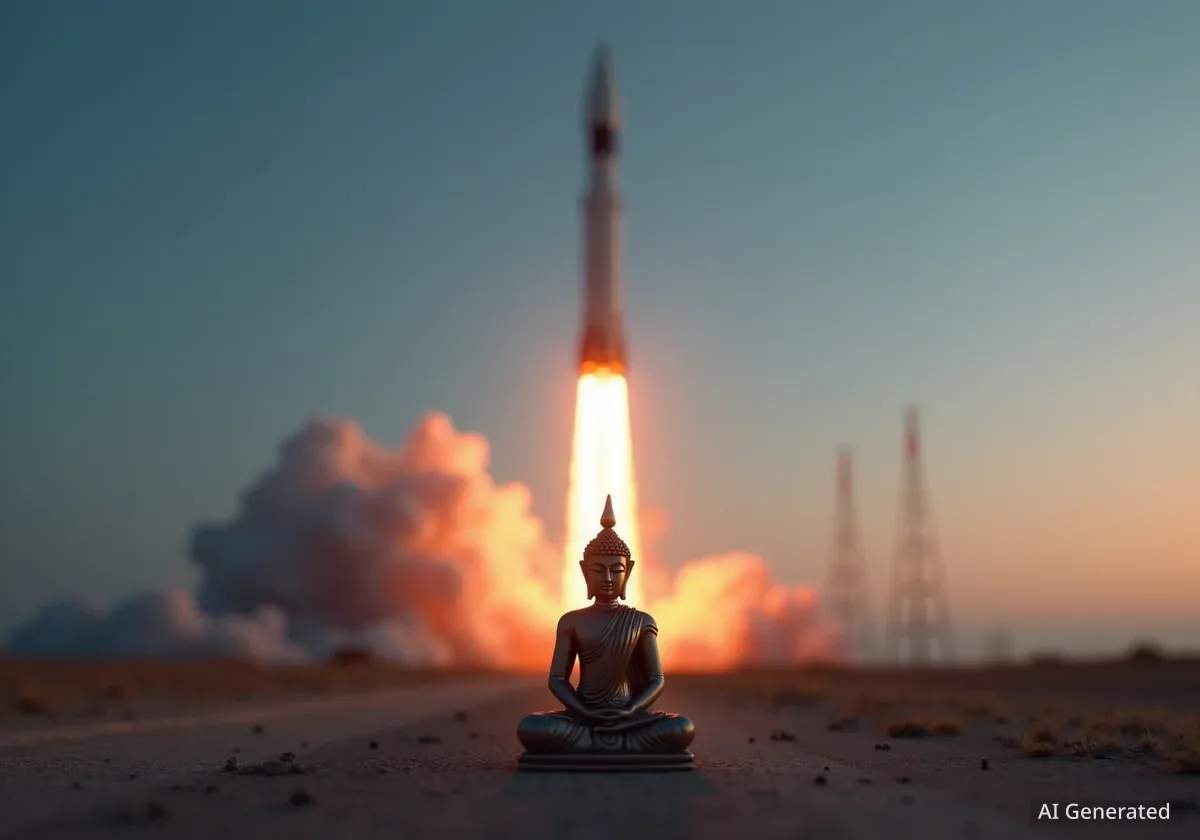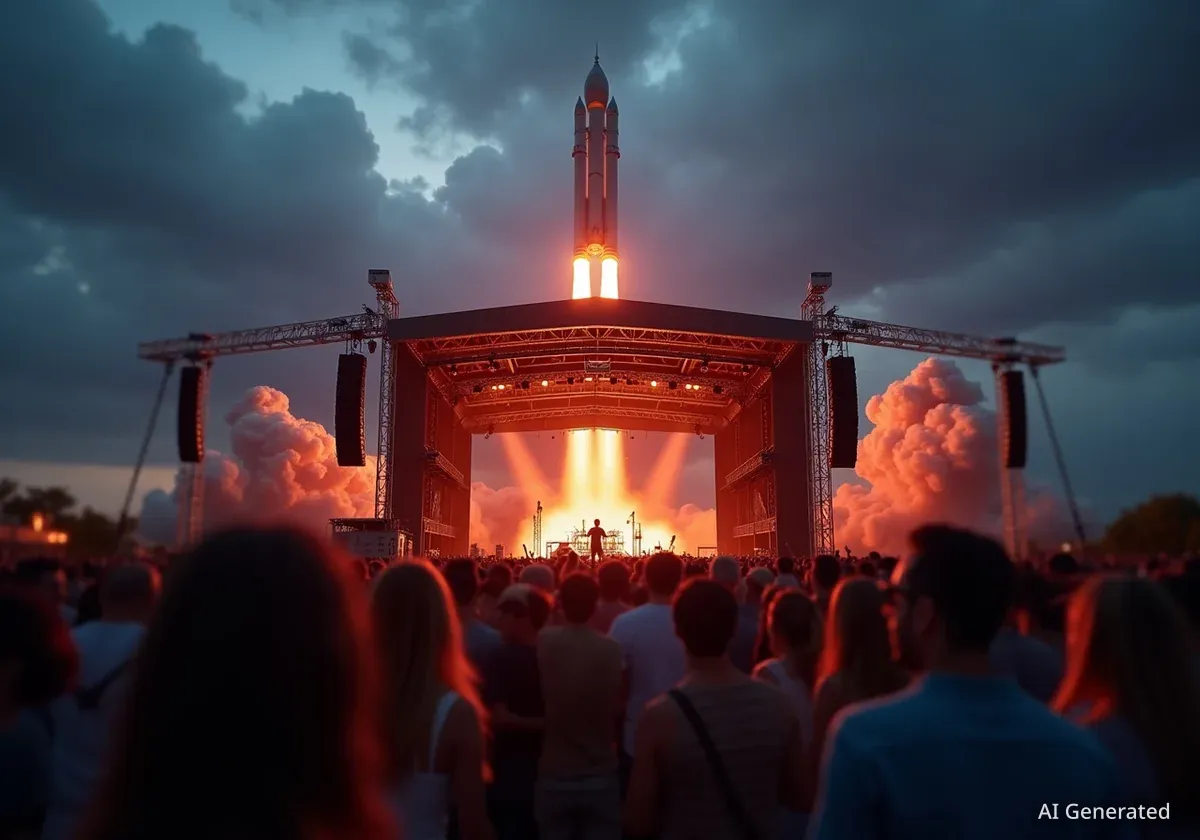Beyond government missions and commercial satellite launches, a different kind of space race is underway: the effort to send unique and sometimes strange objects into orbit and beyond. From a sports car currently millions of kilometers from Earth to a miniature temple designed for prayer, these missions reveal deep-seated human motivations, including the desire for legacy, the need to be first, and the ambition to stake a claim in the final frontier.
Key Takeaways
- Humans send a wide variety of unusual objects into space, ranging from religious artifacts and human remains to consumer products and art projects.
- Key motivations include the psychological drive to be first, the desire for a form of immortality or legacy, and attempts to communicate with potential extraterrestrial life.
- Some launches, like Elon Musk's Tesla Roadster, are interpreted as symbolic gestures to claim territory for future human activity and resource utilization in space.
- Companies like Celestis have created a market for memorial spaceflights, sending cremated remains and DNA into orbit, deep space, or to the lunar surface.
The Quest for Cosmic Firsts
A powerful driver behind sending unusual items into space is the simple but profound desire to be the first. This impulse was highlighted in December 2024 when Japanese Buddhist monks attempted to launch a miniature temple into orbit aboard a Kairos rocket. Although the rocket failed, the mission successfully carried a statue of Dainichi Nyorai, the Cosmic Buddha, more than 110 kilometers high, marking its first journey into space.
The project's goal is to allow Japanese people living abroad to send prayers to the orbiting temple as it passes overhead. The monks intend to try again, underscoring the importance of achieving this unique milestone.
This drive to be first is not just about bragging rights. Biologists refer to the "founder effect," a principle where the first to arrive in a new environment has a disproportionate influence on everything that follows. In the context of space, being the first to place an object or symbol in a location can set a powerful precedent for future exploration and use.
Psychological Drivers
Some experts suggest the preference for being first is an evolutionary trait that was once essential for survival. Others link it to a psychological need to prove oneself. Regardless of the origin, this drive has led to numerous historic firsts in space, from the first animal in orbit to the first piece of art on the Moon.
Memorials Among the Stars
One of the most established categories of unusual space payloads involves sending the remains of the deceased into the cosmos. This practice offers a modern form of memorialization, promising a kind of celestial immortality for loved ones.
A company named Celestis has been offering memorial spaceflights since 1994, launching small capsules containing cremated remains or DNA samples. One of its first and most famous missions was the 1997 "Founders Flight," which carried the ashes of 24 individuals, including Star Trek creator Gene Roddenberry.
Extending Legacy Beyond Earth
The desire for a lasting legacy is a powerful motivator. In 1971, the crew of Apollo 15 left a small aluminum sculpture and a plaque on the Moon to honor astronauts who had died in the pursuit of space exploration. This "Fallen Astronaut" memorial remains the only piece of art on the lunar surface specifically created for that purpose.
The practice extends beyond humans. A failed launch in January 2024 included more of Gene Roddenberry's remains alongside those of a dog named Indica-Noodle Fabiano. Even prehistoric life has been included; a fragment of a Tyrannosaurus rex bone was flown on a NASA Orion flight in 2014 as a symbolic reminder of the long history of life on Earth.
A Growing Industry
The space memorial industry provides several options for final arrangements, including short orbital flights where ashes return to Earth, flights into deep space, and missions to the lunar surface. Prices can range from a few thousand to tens of thousands of dollars.
Messages in a Cosmic Bottle
Many objects sent to space are intended as messages, either for a future humanity or for any intelligent life that might one day find them. These payloads range from the scientific to the deeply personal and abstract.
Religious iconography is a common theme. The Russian segment of the International Space Station contains Orthodox icons. In a more futuristic example, a company called beingAI plans to send a nickel disk to the Moon imprinted with a digital image of an AI trainee Buddhist priest named Emi Jido.
Other messages have been more unconventional.
- In 1986, the Massachusetts Institute of Technology transmitted a weak radio signal called Poetica Vaginal, which converted vaginal contractions into data, toward the Eridanis constellation before the U.S. Air Force intervened.
- In 2010, an invitation to a Klingon opera performance was beamed toward the star Arcturus, written entirely in the fictional language from Star Trek.
These transmissions, whether artistic, religious, or bizarre, reflect a hope that humanity is not alone and a desire to communicate our complex, and sometimes strange, culture to the universe.
Staking a Claim on the Final Frontier
Perhaps the most famous unusual object in space is Elon Musk's cherry-red Tesla Roadster. Launched in 2018 aboard the maiden flight of the Falcon Heavy rocket, the car, with a mannequin named "Starman" in the driver's seat, continues to orbit the sun, with David Bowie's "Space Oddity" playing on a loop.
While often seen as a marketing stunt, some analysts view the Tesla launch as a strategic statement of intent. It acts like a symbolic marker, claiming a piece of the solar system for human endeavor. The car's orbit crosses that of Mars, a planet central to humanity's long-term space exploration goals.
The Deckchair Analogy
Sending a seemingly pointless object to a specific region in space is like placing a towel on a deckchair you plan to use later. It signals an intention to occupy and utilize that area, even if the specific plans are not yet defined. As humanity looks toward mining asteroids and establishing bases on the Moon and Mars, such symbolic acts may become increasingly significant in staking claims on valuable off-world territory.
As launch costs decrease and access to space becomes more common, the trend of sending unusual objects into orbit is likely to continue. These payloads, from the profound to the peculiar, serve as a unique record of our civilization's values, hopes, and eccentricities at the dawn of the space age.




